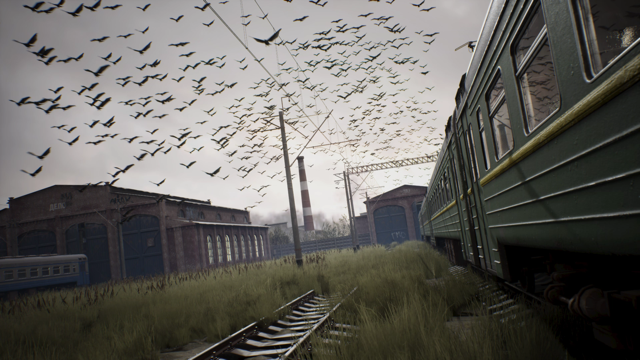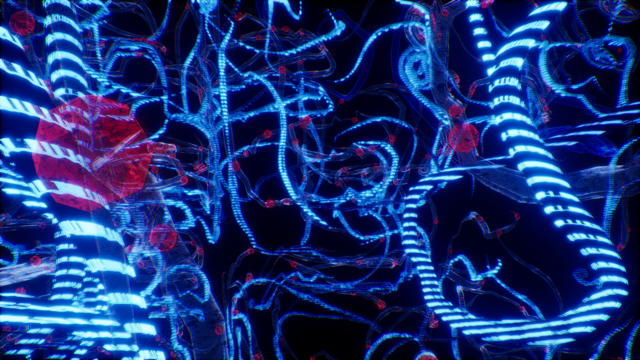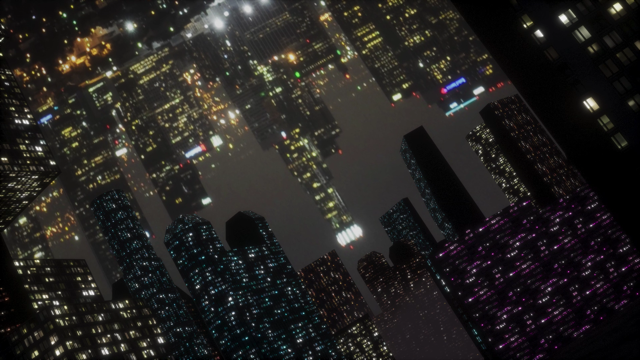The transition from the Trump administration to the Biden administration has been the source of much discussion from both sides of the political spectrum. The Bertelsmann Foundation production The Transition is a series which presents a number of vital topics concerning the different perspectives and intentions of these administrations in a unique way never before seen. Animator and digital artist Xi Wang was contacted by the production’s director Tom Glynn specifically due to his rich environment designs. Tasked with using animation and motion graphics to contribute unique visual designs to accompany the interviews featured in The Transition, Xi’s work resulted in a fresh approach that hints at a new genre, art influenced politically informative content. While creating new ways to deliver entertainment in order to emotionally and intellectually stimulate the interest of the viewer is commonplace for Mr. Wang, the intention of doing so in a fact based political discussion is far from the norm.

Tom Glynn is a filmmaker who has distinguished himself in the realm of documentaries. His productions like Uncivil War: U.S. Elections Under Siege, The Troubles with Brexit, and The War Within (nominations from the Film Independent Spirit Awards, Satellite Awards, and Political Film Society) rush headfirst into topics of international relevance. For The Transition, Glynn wanted to introduce information about the Executive Office’s power change and how it would alter European and American collaborations. Cognizant that the interviews with experts featured throughout the six-episode series might be “dry” visually, the director turned to Mr. Wang to design artistic styles and provide solutions for visual effects. Equally important was that each of the different episodes would possess their own visual tone congruent to the individual topics. Stylistic approaches ranging from Cyberpunk to biological science to surrealism and others were utilized along with technological approaches like real-time rendering, virtual production, motion graphics, and others to fashion a visual language that distinguishes The Transition from other political content interviews.

“Digital Economy” is the premier episode of the series. Based on a theme of the Digital world and Digital economy, the cyber style visual approach used for this episode helps place the viewer “in the world” being discussed. Xi Wang collaborated with motion graphic artist Xiaotong Wen to create two different city scenes, one virtual and one real, which appear at the same time with one inverted on top of the other. The third episode, which discusses Cybersecurity, features surreal visuals such as flaming doorways in the middle of a dark forest which burns as a result. One scene in this third installment takes place at a train station and utilizes camera movement in a narrow space in a micro world; an approach which hints to the Oscar Nominated David Fincher film Fight Club, also notable for its striking visual tone. The fact that director Tom Glynn used a virtual iPad camera and Xbox controller to illustrate the motion direction of shots confirms that both he and Xi were invested in taking unorthodox approaches to the look of The Transition. Glynn’s direction partnered with Xi’s skill in animation software and perspective as a trained painter culminated in an aesthetic style that augments the topics and focuses these ideas into visual metaphors. The Transition offers as much entertainment for your eyes as it does in depth of political content.

More known for his Award-Winning Animated Films like Metamorphosis (recipient of the Director’s Choice Award at the 40th Annual Thomas Edison Black Maria Film Festival in addition to others) and collaborations with Grammy Award Winner Mike Patterson for Getty Unshuttered, Xi concedes, “Obviously, the tone of The Transition is very different from many of my other projects but that’s a big part of what attracted me to this online series. I don’t want to repeat myself. I want to be forced into new creative situations and find a way to create something that makes them better. The tone of The Transition is direct. Tone needs to accurately represent to its topic, because the dialogue has conveyed a clear message. Emotion and imagination are all around these, while animation is more of a visual extension. For example, the idea of floating gates above the forest in the third episode of this series was inspired by a painting by surrealist artist René Magritte. The mysterious and surreal doors just hint at the invisible but ubiquitous threat from cyber in contemporary society. Working on The Transition allowed me to bring that influence to viewers who might not be aware of this great artist. I thrive on finding new inspiration like that.”
Coleman Haan


Be the first to comment on "Visualizing The Transition with Xi Wang"